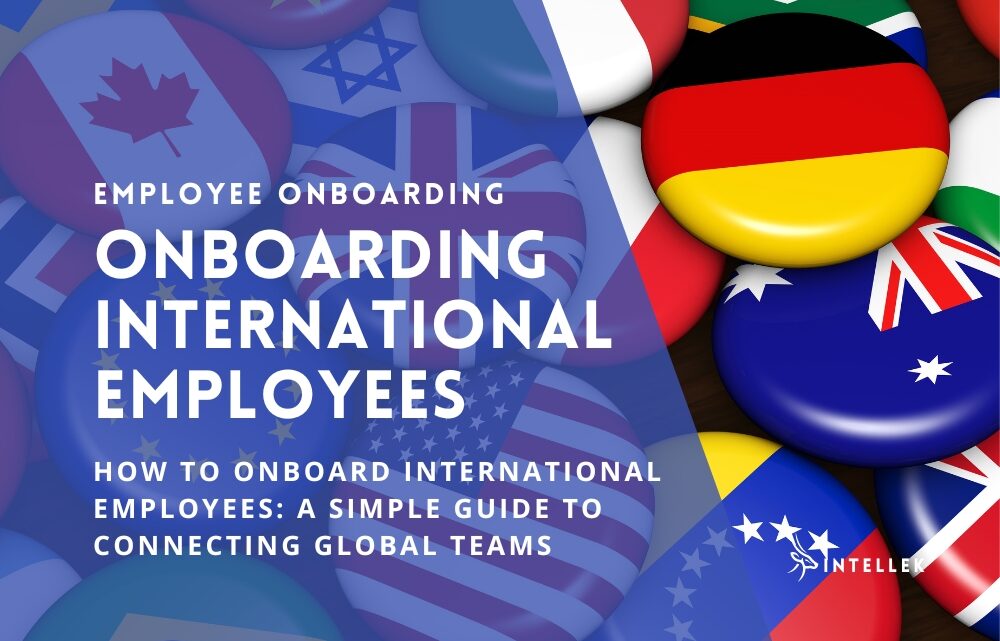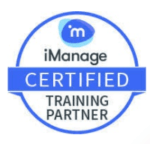
Welcoming international staff to your organization is crucial to building a global team. However, traditional methods to onboard international employees may not always address the unique needs of employees from diverse cultural backgrounds.
This guide aims to explore the importance of onboarding international employees, the challenges they may face, and how digital solutions can help create a smoother transition for everyone involved. By embracing innovative approaches, organizations can ensure that every employee, regardless of their location, feels valued, supported, and ready to contribute to the success of the team.
IN THIS ARTICLE...
Understanding the Needs of International Employees
When welcoming international employees, it’s essential to recognize and address their unique requirements. Cultural differences often play a role in shaping expectations during the onboarding process.
Language barriers and communication challenges may also impact how effectively information is conveyed and understood when you onboard international employees. Additionally, legal and logistical considerations, such as visa requirements and relocation assistance, must be carefully managed.
Here is a list of potential needs that international employees may have during the onboarding process:
- Cultural Orientation: Assistance in understanding the organizational culture, work practices, and social norms prevalent in the new workplace.
- Language Support: Access to language training or translation services to overcome language barriers and improve communication with colleagues and clients.
- Visa and Immigration Support: Guidance and support with visa applications, work permits, and residency requirements to ensure legal compliance and smooth relocation.
- Relocation Assistance: Assistance with finding housing, setting up bank accounts, obtaining local identification, and navigating public services in the new country.
- Legal and Compliance Training: Training on local labor laws, employment regulations, and company policies to ensure compliance and mitigate legal risks.
- Tax and Financial Guidance: Information on tax obligations, payroll procedures, and financial planning to help international employees manage their finances effectively.
- Healthcare and Insurance: Assistance in understanding and accessing healthcare services, insurance coverage, and medical facilities available in the new location.
- Social Integration: Opportunities for networking, socializing, and building connections with colleagues and local communities to foster a sense of belonging and support.
- Cross-Cultural Communication Training: Training on effective communication styles, cross-cultural etiquette, and cultural sensitivity to promote collaboration and minimize misunderstandings.
- Career Development Opportunities: Access to training programs, mentoring, and professional development opportunities to support career growth and advancement within the organization.
By understanding and accommodating these needs, organizations can ensure a smoother onboarding experience for international hires, fostering a sense of belonging and setting the stage for success in their new roles. Addressing these needs during the onboarding process can help international employees feel supported, valued, and empowered to succeed in their new roles and environments.
Best Practices to Onboard International Employees
Creating a comprehensive onboarding plan tailored specifically to the needs of international employees is paramount. This plan should encompass various aspects, including cultural orientation, language training, and logistical support. By addressing these areas from the outset, organizations can ensure that international hires feel supported and equipped to navigate the transition smoothly.
Using digital resources and multimedia tools can significantly enhance the onboarding experience for international employees. Delivering onboarding materials in multiple languages and formats not only improves accessibility but also increases engagement. Leveraging technology in this way enables organizations to cater to the diverse needs and preferences of their global workforce.
Providing ongoing support and resources throughout the onboarding process is essential for the success of international employees. Relocation can present numerous challenges, from adapting to a new culture to navigating professional development opportunities. By offering continuous support and guidance, organizations can help international hires overcome these challenges and thrive in their new roles.
Cross-cultural training and communication workshops are invaluable for promoting understanding and collaboration across diverse cultural backgrounds. By fostering an inclusive and culturally sensitive environment, organizations can enhance teamwork and productivity within global teams. These initiatives also contribute to a more positive and cohesive organizational culture.
Integrating onboarding processes with existing HR systems and processes streamlines administrative tasks and ensures compliance with regulations. By automating workflows and centralizing information, organizations can minimize errors and optimize efficiency throughout the onboarding journey.
Implementing mentoring or buddy programs pairs international employees with experienced colleagues who can offer guidance, support, and cultural insights. These programs facilitate social integration and help new hires navigate the nuances of the organizational culture more effectively.
Establishing clear communication channels and points of contact for international employees fosters open dialogue and enables them to seek assistance, ask questions, and address concerns as they arise. Regular communication helps build trust and rapport, facilitating a smoother transition for international hires.
Finally, soliciting feedback from international employees on their onboarding experience is crucial for continuous improvement. By listening to their input and incorporating their suggestions, organizations can refine their onboarding practices and better meet the needs of future hires.
By following these best practices, organizations can create a positive and supportive onboarding experience for international employees, facilitating their integration into the team and maximizing their contribution to the organization’s success.
5 Common Pitfalls of International Onboarding
Navigating the onboarding process for international employees can present various challenges. By recognizing and addressing common pitfalls when onboarding international employees, organizations can ensure a smoother transition for their global workforce.
- Cultural Misunderstanding: Cultural differences can lead to misunderstandings and miscommunications, hindering collaboration and productivity.
Solution: Offer cultural sensitivity training and cross-cultural communication workshops to promote understanding and mutual respect among team members. Use a digital adoption platform (DAP) to provide interactive modules and resources that facilitate cultural awareness and sensitivity training. - Legal and Compliance Issues: Navigating complex legal and compliance requirements in different countries can be daunting and may result in non-compliance.
Solution: Provide comprehensive training on local labor laws, employment regulations, and company policies to ensure international employees are aware of their rights and responsibilities. Implement a centralized digital platform to deliver and track compliance training, ensuring consistency and accountability across the organization. - Technical Challenges: Technical issues, such as access to IT systems and software, can disrupt the onboarding process and hinder productivity.
Solution: Offer technical support and troubleshooting resources to address common IT issues promptly. Implement a DAP that provides step-by-step guidance and tutorials on accessing and using essential systems and tools, empowering international employees to overcome technical challenges independently. - Language Barriers: Language barriers can impede communication and comprehension, leading to frustration and inefficiency.
Solution: Provide language training and translation services to help international employees improve their language skills and facilitate effective communication. Use multilingual features within digital platforms to deliver training materials and resources in the preferred language of each employee, enhancing accessibility and understanding. - Social Integration: International employees may feel isolated or disconnected from their colleagues, impacting morale and team dynamics.
Solution: Foster a culture of inclusion and belonging by organizing team-building activities, social events, and cross-departmental collaborations. Implement a digital platform for virtual networking and collaboration, facilitating connections and relationship-building among remote and distributed teams.
By proactively addressing these common pitfalls and implementing practical solutions, organizations can enhance the onboarding experience for international employees, promote cultural integration, and set the stage for long-term success within global teams.
Implementing a Culture Buddy Onboarding Program
Organizations needing to onboard international employees can support their transition and integration by implementing a Culture Buddy program.
In this approach, each new international hire is partnered with a tenured local employee at the company. The “culture buddy” helps new hires navigate unwritten rules, norms, and expected behaviors that may be unfamiliar given their background.
Pairing an international new hire with someone deeply embedded within the local office culture serves several purposes:
- Creates a non-judgmental space for newbies to ask sensitive questions about cultural differences they observe or experience
- Provides insight into unspoken social dynamics between local colleagues
- Explains the context for behaviors that might seem unusual or brusque otherwise
- Offers practical advice about communication etiquette with various stakeholders
- Shares tips for smoothing integration into social aspects of the workplace
Culture Buddies meet 1:1 with international hires regularly, whether remotely or in person, to coach them through the soft side of acclimating to the corporate environment. This system aims to accelerate international team members feeling comfortable, confident and set up for success as they onboard.
Formalizing this cultural mentorship model through a Culture Buddy program can enhance international transfers’ sense of belonging, productivity, and retention.
Using Digital Solutions to Onboard International Employees
Digital solutions offer numerous advantages for streamlining the onboarding process. Firstly, they help in simplifying and automating administrative tasks, saving time and resources for both HR professionals and new hires. Secondly, digital platforms allow for personalized onboarding experiences, catering to the diverse needs and preferences of employees from different cultural backgrounds.
Additionally, these solutions can help to ensure compliance with regulations and policies, reducing the risk of errors and ensuring a smooth transition for international hires. Moreover, digital platforms enable HR teams to track the progress and engagement of new employees more effectively, providing valuable insights for ongoing support and development.
Some organizations have begun using digital adoption platforms (DAPs) to aid with global onboarding processes. These platforms provide step-by-step walkthroughs to help employees learn new software systems. Features often include training videos, knowledge checks, and performance support materials.
Proponents of DAPs claim they can:
- Personalize onboarding with targeted content for each learner’s needs
- Make onboarding consistent across an organization
- Give managers better insights into training effectiveness
DAPs may have limitations as well, including upfront subscription costs or the need for internal customization. There may be additional software integration challenges with these platforms.
Organizations should weigh up if a DAP aligns with their onboarding goals and budget before implementing such tools. With careful selection and customization, they present a powerful option to facilitate smooth onboarding.
Introducing DAPs: Enhance Your Onboarding Processes
Digital adoption platforms (DAPs) represent a powerful tool to onboard international employees with. These platforms are designed to facilitate the seamless integration of new technologies and processes into an organization, including the onboarding of international employees. By providing step-by-step guidance, interactive tutorials, and contextual support, DAPs empower employees to quickly and efficiently navigate new systems and tools.
One of the key benefits of DAPs is their ability to personalize the onboarding experience for each employee, regardless of their cultural or linguistic background. Through targeted content delivery and adaptive learning paths, DAPs ensure that employees receive the information and training they need when they need it most.
Furthermore, DAPs offer valuable insights into employee engagement and proficiency levels, allowing HR teams to identify areas for improvement and provide targeted support where necessary. This data-driven approach not only enhances the onboarding experience but also lays the foundation for ongoing learning and development initiatives.
Digital adoption platforms play a crucial role in enhancing onboarding processes by providing personalized guidance, improving employee engagement, and facilitating continuous improvement. By leveraging these platforms, organizations can ensure that their international employees feel supported, empowered, and ready to contribute from day one.
Empowering Global Success With Effective Onboarding
Effectively onboarding international employees is essential for building connected and cohesive global teams. By implementing best practices and addressing common pitfalls when you onboard international employees, organizations can ensure a smooth transition for their diverse workforce and maximize their contribution to the organization’s success.
Key Takeaways for International Employee Onboarding
- Personalized Support: Tailor onboarding plans to meet the unique needs of international employees, including cultural orientation, language support, and legal compliance training.
- Digital Solutions: Use digital resources and platforms to streamline the onboarding process, provide accessible training materials, and facilitate communication and collaboration.
- Continuous Support: Offer ongoing support and resources to help international employees navigate challenges, integrate into the team, and pursue career development opportunities.
- Cultural Awareness: Foster a culture of inclusion and diversity by promoting cross-cultural understanding, communication, and collaboration within global teams.
- Feedback and Improvement: Solicit feedback from international employees to continuously improve onboarding practices and better meet their needs in the future.
Next Steps to Onboard International Employees
- Regularly collect feedback through surveys and other mechanisms to identify areas for improving the international onboarding process.
- Benchmark approaches from industry leaders and high-performance global organizations.
- Track return on investment through key metrics like new hire ramp-up time, international retention rates, and global team productivity.
- Keep enhancing the cultural integration, system adoption, and employee experience based on this data and external benchmarks.
International onboarding is an evolving journey – by frequently gathering insights and refreshing approaches, organizations can stay on the cutting edge in supporting global team success.
By embracing these principles and investing in the success of international employees, organizations can create an inclusive and supportive work environment where all team members feel valued, empowered, and motivated to excel.
Intellek (formerly TutorPro) is a founding member of the learning technology industry. With a presence in the USA, UK, Canada, and the EU – for over 30 years we have pioneered the development of cutting-edge eLearning software and online training solutions, with a large and diverse portfolio of international clientele.
Disclaimer: We use all the tools available including generative AI to create relevant and engaging content.





